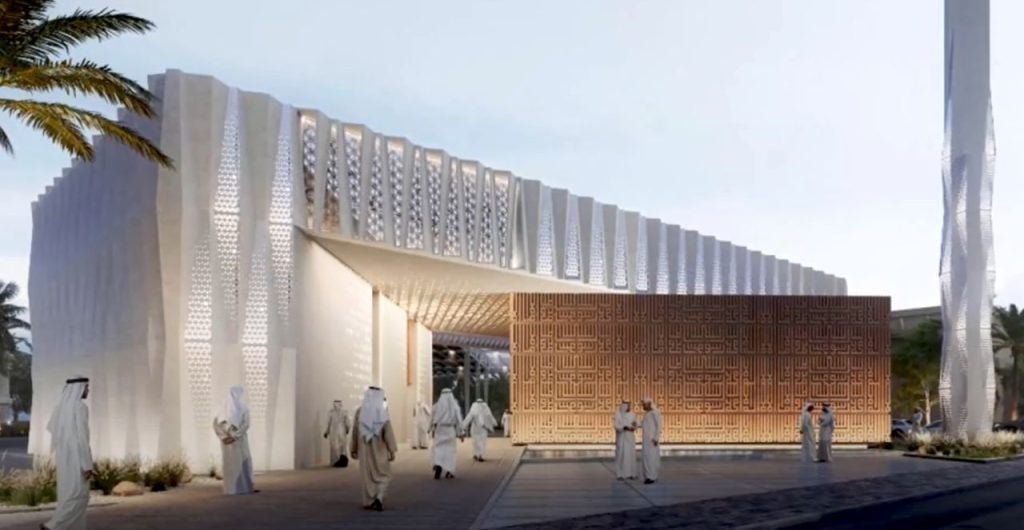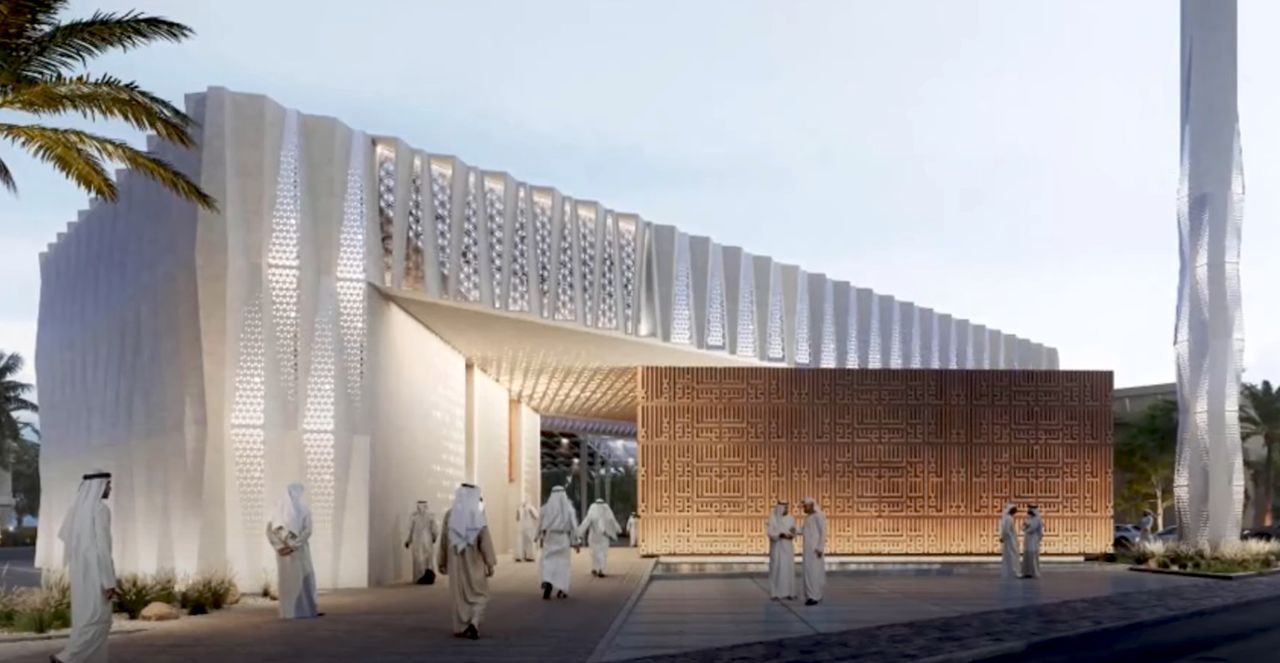
Another high-profile 3D printing project is underway in Dubai, and I’m a bit suspicious.
First, the background.
The government of Dubai announced a new project to build the world’s first 3D printed Mosque in the Bur Dubai area of the city. The structure is expected to be approximately 2000sm (21,500sf), and could likely be among the largest structures ever 3D printed.
The plan is to begin the construction phase this fall, and complete the 600-person structure by 2025. Reports say the 3D printing portion of the project will take up four months, while the remaining fittings will take another twelve months to complete.
According to a report on The Islamic Information, the printing will be done with three operators, and the device will extruder approximately “two square meters per hour”. I’m not sure what that means because 3D printing is not 2D printing, but possibly it could mean one layer of two square meters of material can be printed in an hour?
This all sounds good, but I have concerns.
First, this project is being portrayed as another “World’s First 3D Printed” item. This marketing approach was used for many years in the early days, and it has lost much of its value. Sure, something might be the first, but it turns out that it doesn’t really doesn’t matter to most people. What matters is the efficiency, repeatability and other more practical measurements.
I also take issue with the notion that this is a “3D printed” structure. In fact, only the concrete portions of the structure are 3D printed, while the remaining HVAC, plumbing, electrical, finishing, roofing, flooring, windows, hardware and literally everything else that isn’t concrete is done using conventional approaches.
Those not familiar with 3D printing will read the news stories and conclude that the entire structure is being “3D printed” from some magic device. It’s most definitely not so.
Construction 3D printing is simply ONE tool among many used in construction. The notion of “3D printed homes in 24 hours” was always ridiculous and is now discounted by most in the industry. I wonder why an organization would still use this marketing approach that would have been more appropriate in 2013?
What about efficiency? Is this a better method, economically, to pursue? The Islamic Information report said:
“According to Al Suwaidi, the construction of this 3D mosque costs 30 percent more than mosques that are built in the usual way, considering it is the first of its kind in the world. However, he hopes that the cost of constructing the 3D mosque, which will last around 30 years, can decrease.”
So it’s actually MORE expensive to use 3D printing than conventional approaches!
The only way I can see this tech being less expensive would occur when the architectural designs are so complex that making them with the usual approaches are excessively expensive. I’m not sure that’s the case here, but why would you make something so complex?
It would appear that this project, along with several that have occurred in the past, are all about showing off the 3D print capabilities of that region. The intent, as stated, seems to be to establish the area as a center for this type of 3D print expertise and usage.
Maybe that would occur, but in my experience successful businesses first figure out how to make something better/cheaper, and only then do the marketing to convince others. It seems that the folks in Dubai are doing this in the wrong order.
Via IACAD and The Islamic Information

